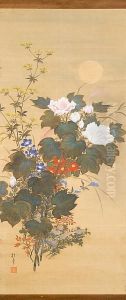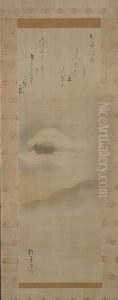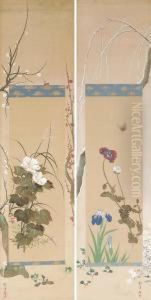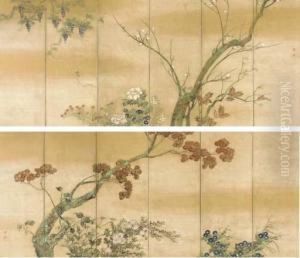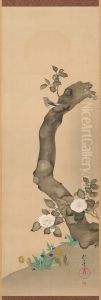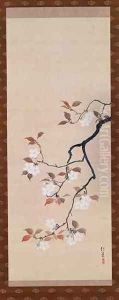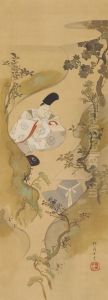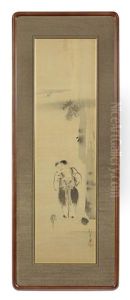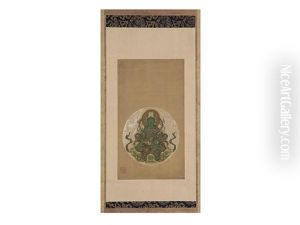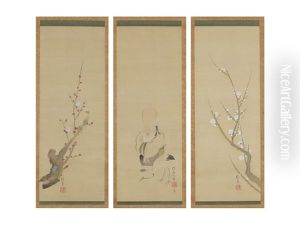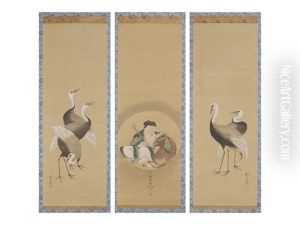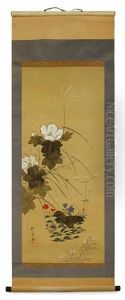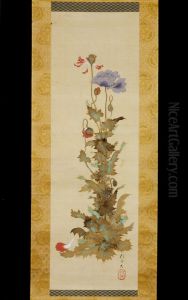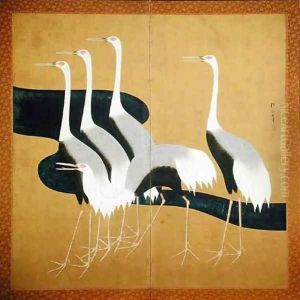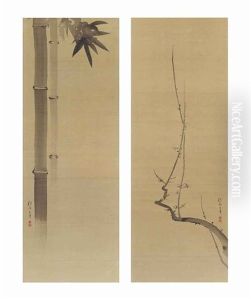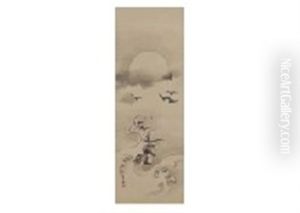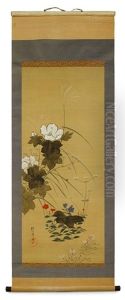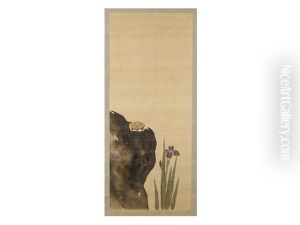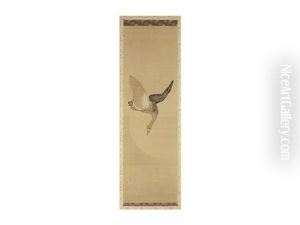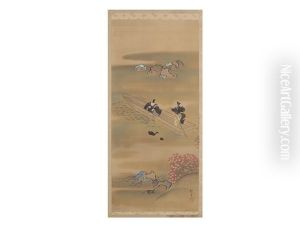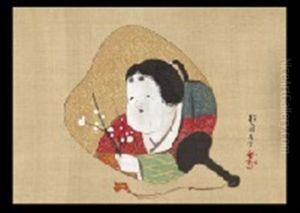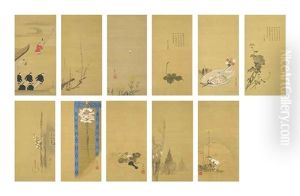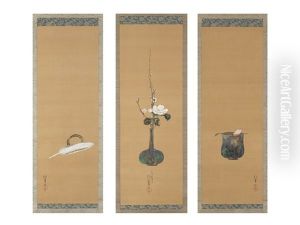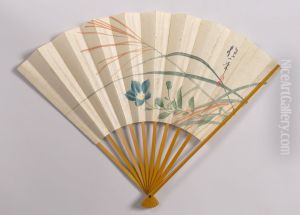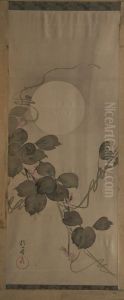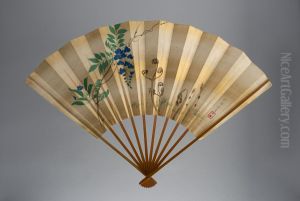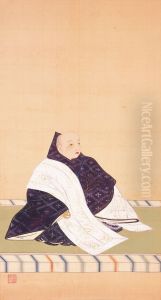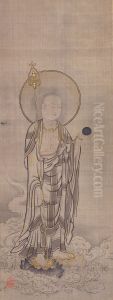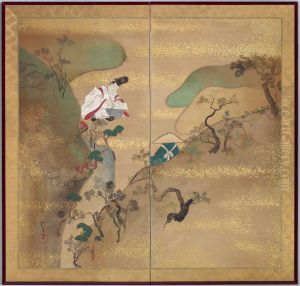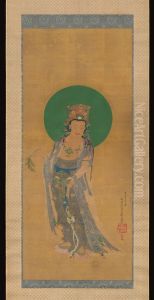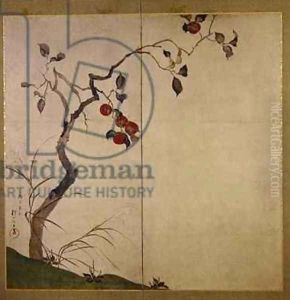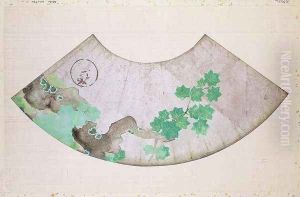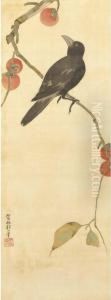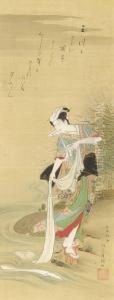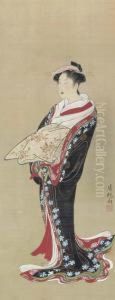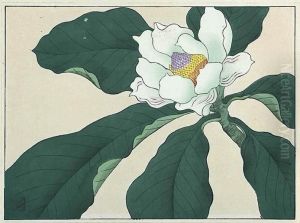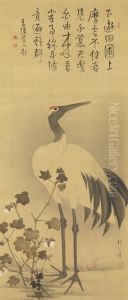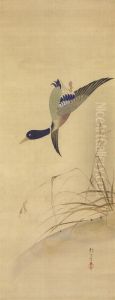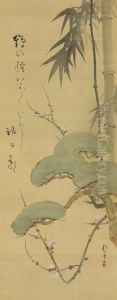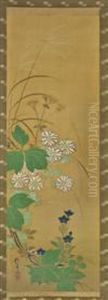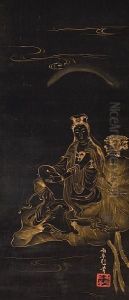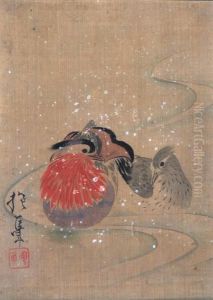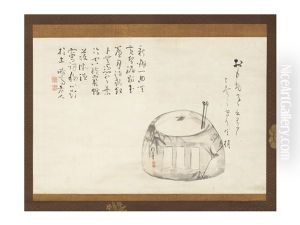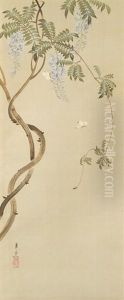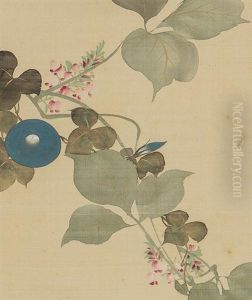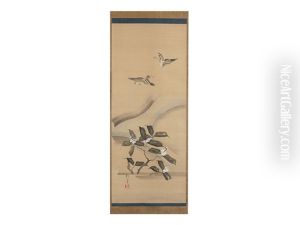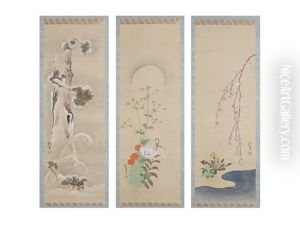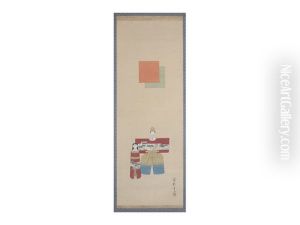Sakai Hoitsu Paintings
Sakai Hoitsu was a prominent Japanese painter of the Rinpa school, one of the major historical schools of Japanese painting. Born on September 1, 1761, into a well-to-do samurai family in Edo (present-day Tokyo), he was the second son of Sakai Tadazane, who was the lord of the Himeji Domain in Harima Province (present-day Hyōgo Prefecture).
Hoitsu is known for his revitalization of the Rinpa tradition, which had begun in the 17th century with Hon'ami Kōetsu and Tawaraya Sōtatsu, and was later consolidated by Ogata Kōrin in the early 18th century. Hoitsu's works were characterized by their elegant and decorative style, often employing the use of gold and silver foil in the depiction of flowers, birds, and traditional Japanese themes.
Despite being born into samurai nobility, Hoitsu did not initially pursue a career in the arts. It wasn't until his 40s that he began to seriously study painting, taking inspiration from the works of Ogata Kōrin. He eventually became a Buddhist monk and changed his name to Hoitsu, which marked a significant turn in his life and art.
Hoitsu's artistic career was marked by his meticulous study of Kōrin's style and the production of his own works, which often paid homage to the Rinpa master. He produced numerous folding screens, scrolls, and fans, and his careful compositions and vibrant use of color won him acclaim. His most famous works include the 'Four Seasons Screens' and 'Flowering Plants of Summer and Autumn.'
In addition to his own creations, Hoitsu was instrumental in compiling a collection of Kōrin's works, which he published in a woodblock printed book titled 'Kōrin Hyakuzu' (One Hundred Pictures by Kōrin) in 1815. This act of preservation and study helped to ignite a Rinpa revival in the 19th century.
Sakai Hoitsu passed away on August 7, 1828, leaving behind a legacy that would influence Japanese art for generations. His dedication to the Rinpa school helped to ensure its survival and prosperity into the modern era. His works are held in high regard and can be found in numerous museum collections around the world, including the Metropolitan Museum of Art in New York and the Tokyo National Museum in Japan.
